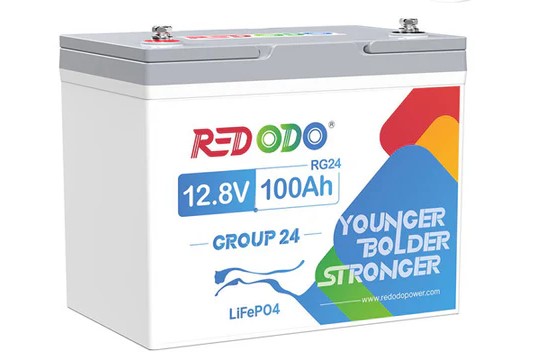When it comes to reliable power storage, the Group 24 battery is a popular choice across various applications. From automotive and marine use to renewable energy systems and backup power, these batteries are celebrated for their versatility and robust performance. In this article, we’ll explore what a Group 24 battery is, its common uses, advantages, and factors to consider when choosing the right one for your needs.
What is a Group 24 Battery?
A Group 24 battery is classified by the Battery Council International (BCI) based on its size and capacity. These batteries typically measure about 10.25 inches (L) x 6.81 inches (W) x 8.88 inches (H), though slight variations may exist between manufacturers. Group 24 batteries can be found in different chemistries, including flooded lead-acid, AGM (Absorbent Glass Mat), and lithium-ion.
With a capacity generally ranging from 70 to 85 amp-hours (Ah) and a voltage of 12 volts, they offer a well-balanced combination of power and portability, making them ideal for medium-duty applications.
Common Applications of Group 24 Batteries
Thanks to their versatility, Group 24 batteries are used in a wide range of applications, including:
1. Automotive Applications
Group 24 batteries are often found in older or specialized vehicles requiring a dependable starting or dual-purpose battery. They provide sufficient cold cranking amps (CCA) to start engines in challenging weather conditions.
2. Marine Use
These batteries are a favorite among boat owners. Whether used for cranking the engine or powering onboard electronics like lights, trolling motors, and GPS systems, their durability in marine environments is unmatched.
3. Recreational Vehicles (RVs)
RVers rely on Group 24 batteries for off-grid power. They can handle deep discharges, making them suitable for powering appliances like refrigerators, lights, and water pumps during camping trips.
4. Renewable Energy Systems
For small-scale solar or wind energy setups, Group 24 batteries act as storage units to provide energy during non-productive periods. AGM or lithium-ion variants are often preferred in these cases due to their maintenance-free nature and extended lifespan.
5. Backup Power
Group 24 batteries are frequently used in uninterruptible power supply (UPS) systems or as backup batteries in homes and businesses. Their reliable power delivery during outages ensures critical systems remain operational.
Types of Group 24 Batteries
Understanding the different types of Group 24 batteries can help you choose the best option for your needs:
1. Flooded Lead-Acid Batteries
- Advantages: Affordable, widely available.
- Disadvantages: Requires regular maintenance, including topping off electrolyte levels and cleaning terminals.
2. AGM Batteries
- Advantages: Maintenance-free, spill-proof, handles vibrations well, longer lifespan than flooded batteries.
- Disadvantages: Higher upfront cost.
3. Lithium-Ion Batteries
- Advantages: Lightweight, fast charging, longer cycle life, higher energy density.
- Disadvantages: Most expensive option, requires compatible chargers.
Advantages of Group 24 Batteries
1. Compact Design
Group 24 batteries strike a balance between size and power, offering substantial capacity without taking up excessive space.
2. Versatility
With applications ranging from vehicles to renewable energy, these batteries are highly adaptable to various power needs.
3. Durability
Quality Group 24 batteries are designed to withstand harsh conditions, including vibrations, temperature extremes, and deep discharges.
4. Easy Availability
These batteries are widely available and supported by many manufacturers, ensuring you can find replacements or upgrades easily.
How to Choose the Right Group 24 Battery
Selecting the right Group 24 battery depends on your specific requirements. Here are some key factors to consider:
1. Purpose
Decide if you need a starting battery (high CCA for engines) or a deep-cycle battery (steady power for extended use). Dual-purpose batteries can handle both, though with some compromises.
2. Battery Chemistry
- Choose flooded lead-acid for affordability if you don’t mind maintenance.
- Opt for AGM if you need a maintenance-free, vibration-resistant option.
- Select lithium-ion for the longest lifespan and lightweight design, especially in high-performance or renewable energy setups.
3. Capacity
Ensure the battery has enough amp-hours (Ah) to meet your power demands. Consider future expansion if the battery is part of a system.
4. Brand Reputation
Stick to trusted brands like Interstate, Optima, VMAX, and Trojan, as they are known for reliability and performance.
5. Warranty
Look for batteries with a strong warranty, as it reflects the manufacturer’s confidence in their product.
Maintaining Your Group 24 Battery
Proper care can extend the life of your Group 24 battery:
- Regular Inspections: Check for corrosion, loose connections, and electrolyte levels (if applicable).
- Charging: Use the appropriate charger for your battery type to prevent overcharging or undercharging.
- Storage: Store in a cool, dry place and ensure it’s fully charged before long-term storage.
- Avoid Deep Discharges: For lead-acid batteries, avoid frequent deep discharges to prevent capacity loss.
Conclusion
The Group 24 battery is a reliable and versatile power source, catering to diverse applications from automotive and marine use to renewable energy systems. By understanding your power needs and the different battery types available, you can select the best Group 24 battery to power your adventures, projects, or essential systems. Whether you prioritize cost, performance, or longevity, there’s a Group 24 battery out there to meet your demands.




